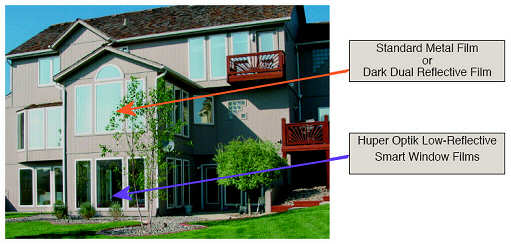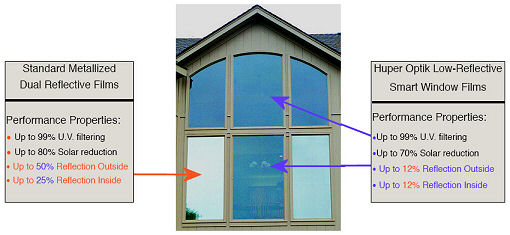Comparing Films

Curb Appeal: What your house will look like
from the outside |
In the world of window film manufacturers, each brand
has a superior feature strength in one area, and weaknesses in other areas.
In the late 80's the latest technology was sputter coated metallized films
(less shiny than silver films (but still shiny), and offered better heat
rejection than dyed films). In the 90's it was spectrally selective (super
light films rejecting a lot of heat, still used today). And through the
80's until today, 3M has offered the most durable scratch resistant coating,
and best adhesives in the market place. Today the latest technology is
in a league of its own: Ceramic films.
The
reason we like Ceramic and in particular Huper Optik's Ceramic Films is
because it fills three common voids that other films don't offer in one
window film: Very low-reflectivity, high heat rejection, and superior
optical clarity.

A Closer Look: Comparing reflective and non-reflective
film |
As much as we like Huper Optik's Ceramic films, the
standard reflective and dual reflective films still serve a purpose in
the market place. That's why we will give you the information (pictures
and specifications), price difference on the cost-estimator, and give
you our best educated opinion to let you make the choice. Look below at
a couple of samples to see what a high heat rejection standard reflective
or dual reflective film may look like from the outside and inside, compared
to Huper Optik Low Reflective Smart Films.
If you still are not sure look at the chart below to
see what best describes your situation.
Film Performance-Aesthetic Comparison Chart
|